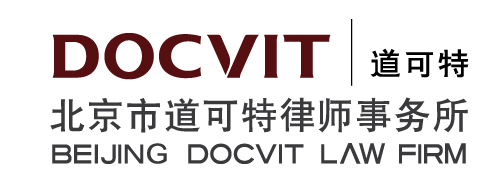On 5 August 2022, Huaxia Beijing Affordable Housing REIT received registration approval from the China Securities Regulatory Commission (CSRC), becoming the third affordable rental housing REIT approved this year, following Hotland Shenzhen Anju REIT and CICC Xiamen Anju REIT. On 31 August 2022, the three REITs were listed and traded simultaneously on the Shanghai Stock Exchange and Shenzhen Stock Exchange, marking another step forward in the construction of China’s REITs market.
The three REITs were oversubscribed, with all of them rising by the daily limit on the first day of listing. But what are the opportunities and challenges for affordable rental housing REITs?
OPPORTUNITY: MARKET DEMAND

Senior Partner
DOCVIT Law Firm
Under the policy of “no speculation in housing”, the simultaneous advance of renting and buying houses will be the main direction of future development of the real estate industry. According to the Ministry of Housing and Urban-Rural Development, about 700 million square metres of affordable rental housing are expected to be built during the 14th Five-Year Plan, and while the market potential is huge, the structure of housing supply requires reform. Financial instruments such as REITs can help introduce social capital to the investment cycle, reduce the burden of affordable housing enterprises and the government, revitalise the stock of assets, develop the rental housing market, cultivate specialised institutionalised housing rental enterprises, increase the supply of affordable rental housing, and achieve sustainable development.
OPPORTUNITY: POLICY SUPPORT
The government has introduced policies to increase the supply of affordable rental housing and has promoted the introduction of REITs for affordable rental housing.
On 2 July 2021, the General Office of the State Council issued the Opinions on Accelerating the Development of Affordable Rental Housing, clearly stating its support for the development of affordable rental housing, reducing the burden on enterprises, increasing the supply of housing, and proposing to strengthen the support for affordable rental housing, including improving land support policy, simplifying the approval process, giving central subsidy support, reducing the tax burden and strengthening financial support.

Partner
DOCVIT Law Firm
On the same day, the National Development and Reform Commission (NDRC) issued the Notice on Further Effectively Completing the Work of the Pilot Programme for REITs in the Infrastructure Sector, including affordable rental housing in infrastructure REIT projects.
On 19 May 2022, the General Office of the State Council issued the Opinions on Further Revitalising Stock Assets and Increasing Effective Investment, clarifying the necessity to revitalise the assets of infrastructure projects in key areas such as affordable rental housing, and promote the healthy development of REITs. On 27 May 2022, the General Office of the CSRC and the General Office of the NDRC jointly issued the Notice on Standardising the Work Related to the Issuance of REITs for Affordable Rental Housing in the Infrastructure Sector on a Pilot Basis to promote the standardised and orderly development of affordable rental housing REIT business, and build an effective isolation mechanism preventing capital risks.
CHALLENGE: NATURE OF LAND
The NDRC notice requires clear ownership of infrastructure projects for affordable rental housing REITs and compliance with the law in its land use. However, there are currently multiple sources of land used for the construction of affordable rental housing in China, such as collective construction land, competitive self-owned land, land of idle property of enterprises and institutions (both residential and non-residential) and R4 special land (including allocated land).
The multi-source land use model is “creative practice” in localities based on existing policies, with no directly applicable superordinate law. In the future, it is necessary to unify standards through the basic law on land and urban-rural planning so that project ownership and operational income rights directly or indirectly held by sponsors (originators) and investors have a more stable basis.
CHALLENGE: SCOPE, IDENTIFICATION
The Opinions on Accelerating the Development of Affordable Rental Housing stipulates that: “Affordable rental housing is aimed at solving the housing difficulties of eligible new citizens, young people and other groups, mainly composed of small-sized housing with a floor area of up to 70 square metres, with rents lower than those of the market rental housing of the same location and quality. The specific conditions for access and exit, and the specific area of the housing, should be determined by the municipal people’s government to guarantee basic needs.” The above-mentioned provisions answer the qualitative issues, but detailed provisions on access and exit standards, and floor area, are for local governments to decide. Beijing, Shanghai, Guangzhou, Wuhan, Xi’an and Jinan have issued measures to identify affordable rental housing, but with no detailed standards for access and exit, which may bring trouble to project sponsors and investors in operation. Therefore, it is necessary to further detail the relevant standards at the national and local level to guide the industry for better and faster development.
CHALLENGE: EARNINGS YIELD
All three affordable rental housing REITs have a yield of slightly more than 4% with an operational term of no less than three years. Although they all sold out in one day, compared with US REITs, which have an annualised return on investment of about 12% in the past 30 years, there is still a large gap between China REITs and US REITs. The revenue of affordable rental housing REITs mainly comes from rental, but their public welfare attribute determines that their rental is lower than that of the market rental housing of the same location and quality.
According to the Rental Yield Research Report of Global 80 Cities (2020) released by Shanghai E-House China R&D Institute, the average rental yield of 80 major cities worldwide is 4.2%, while it is just 1.7% for 12 major cities in China. The authors suggest solving the problem of low yield of affordable rental housing REITs in the following ways:
-
-
“Welcome to follow DOCVIT Law Firm WeChat Platform account” Cities can freely allocate land and give greater tax concessions, government subsidies and financial loan support, to reduce the project’s costs; and
- In operational management, improve the asset operation management capability and efficiency of rental housing enterprises, effectively control the operational cost, ensure a continual high occupancy rate under the condition of price advantage, and obtain “excess” revenue from supporting projects through good management.
-
Su Xianghui is a senior partner and Gao Huanzhang is an partner at DOCVIT Law Firm

DOCVIT Law Firm
56/F Fortune Financial Center
No.5 East Third Ring MiddleRoad
Beijing 100020, China
Tel: +86 10 8586 1018
Fax: +86 10 8586 3605-8006
Email: suxianghui@dtlawyers.com.cn
gaohuanzhang@dtlawyers.com.cn






















